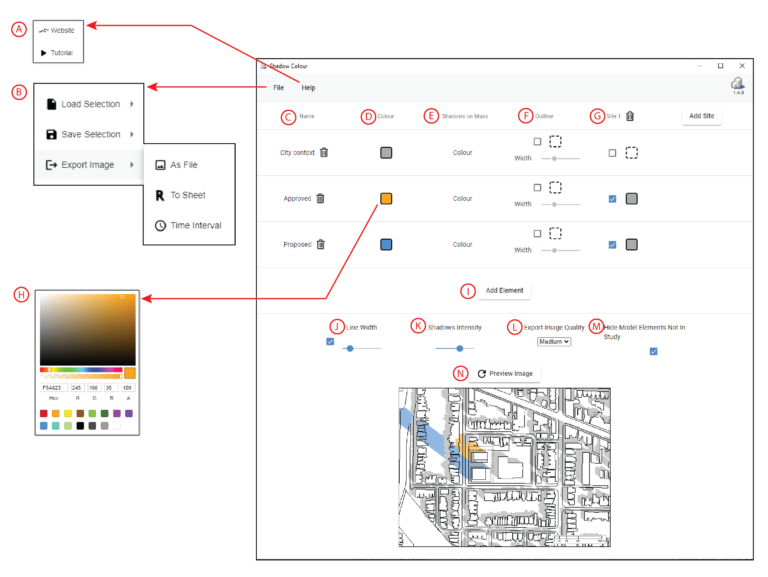Knowledge Base
-
Shadow Colour for SketchUp®
-
Shadow Colour for Autodesk® Revit®
-
Planary for Autodesk® Revit®
-
Planary for Autodesk® AutoCAD®
-
Plan Match for Autodesk® Revit®
-
- Articles coming soon
-
-
Account Management
-
Changelog
Shadow Colour Interface
In this article we will summarize and overview Shadow Colour interface.
A. Help menu, contains links to helpful articles and videos on how to use shadow colour.
B. Export a high-quality image or place it on a sheet.
C. Elements(Layers) of the study, You can remove an element by clicking the garbage bin.
D. Pick a colour for the corresponding element (layer).
E. Colour the shadows cast on the corresponding element (layer).
- Colour – Any shadow that is cast on this element will be coloured using the colour that was chosen for the element that is casting the shadow.
- As Revit – Any shadow cast on this element will be coloured grey using the shadow intensity configured in Revit.
- Invisible – Shadows cast on this element will not be shown.
F. Use the slider to set the line width for the shadow’s outline (optional)
G. Assign a different colour for shadows within a site
H. Colour picker – The colour picker pops up whenever you press the coloured square. You can choose a colour as well as opacity.
I. Add mass or Revit component as layers to your study by picking elements from the view
J. Override line width of your Revit view. Use the slider to set line width (optional)
K. Set the shadow intensity for the image.
L. Image quality for export (recommended ‘Medium’)
M. Hide Model Elements not in Study – Shadow Colour will not include unpicked model elements in the study.
N. Generate/Refresh preview image – You may press ‘Preview Image’ to get a preview of how your shadow study will look like.
Table of Contents

